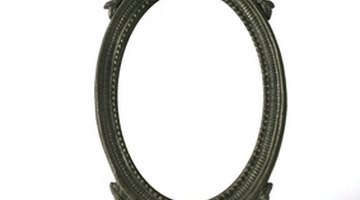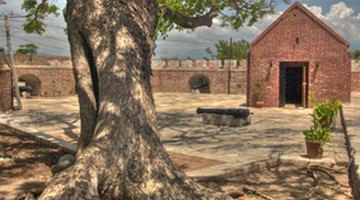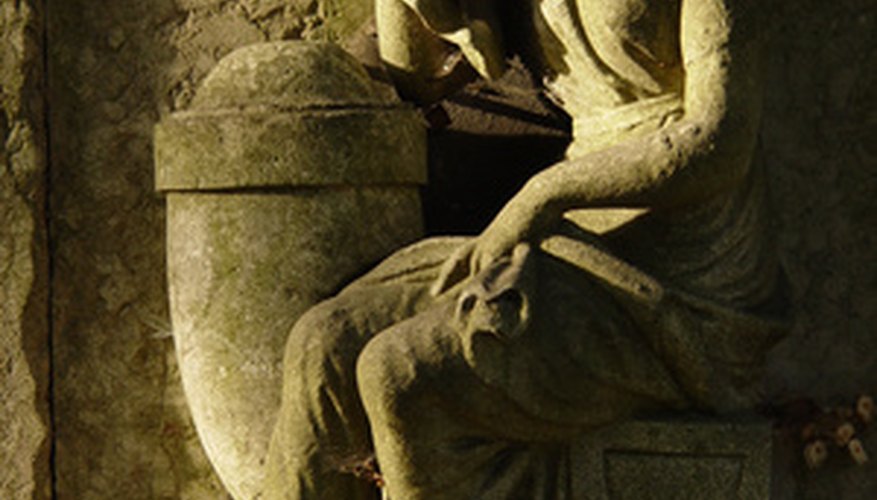While some death, mourning and burial practices vary widely, the practice of covering mirrors after a death seems to be one ritual which spans time, cultures and religions. In many traditions, there appears to be a connection between the soul and the mirror, with a belief that the soul can be reflected or captured by the mirror's reflective surface.
The Ancient World
Helen Costantino Fioratti's article, "The Origins of Mirrors and Their Use in the Ancient World," notes that the myth of Narcissus shows a fascination with reflections dating back to the ancient world. She explains that "inherent in the myth was belief in the existence of a double, or of a soul taking on substance." Thus, according to Fioratti, "some ancients even believed that looking at one's reflection could invite death since the image was thought to capture the soul. Consequently, mirrors had to be veiled and water-filled vessels covered after death" to prevent others from dying as well.
- Helen Costantino Fioratti's article, "The Origins of Mirrors and Their Use in the Ancient World," notes that the myth of Narcissus shows a fascination with reflections dating back to the ancient world.
- Thus, according to Fioratti, "some ancients even believed that looking at one's reflection could invite death since the image was thought to capture the soul.
The Victorians

The Victorian era held many superstitions about death. While the deceased's body was in the house, all mirrors were to be covered in black material. The Barton Upon Humber Family History Aid website explains that this ensured "that the soul of the departed would not get trapped behind the glass and be prevented from passing to 'the other side,'" Similar to the ancient superstitions, the Victorians also believed that "if you saw your own reflection in a room where someone had just died, then you would soon die yourself."
Vampires

The world of the occult offers explanations for the covering of mirrors after death, as well. Kalila Smith's "The History of Vampires in New Orleans" explains that covering the mirrors in a house of mourning was a Southern tradition, as well. Bodies were never left unattended until entombment, both out of respect for the dead, as well as vigilance for paranormal activity. For example, it was believed that one (of many) ways in which one could be transformed into a vampire was when the "dead body was reflected in a mirror." Thus, covering the mirrors was one method of preventing the dead from returning.
- The world of the occult offers explanations for the covering of mirrors after death, as well.
Jamaica

Dr. Rebecca Tortello's article "Deadly Superstitions" notes that the superstitions which run through many facets of Jamaican life were influenced, in large part, by African culture. She adds, "most of these beliefs are born out of a fear of the unknown, fear of what happens after death and how it can affect the living." This is seen in the practice of covering the mirrors in the "'dead' room." Tortello explains that this "prevents the reflection of the living being cast upon the dead [and...] prevents the living from pining away."
- Dr. Rebecca Tortello's article "Deadly Superstitions" notes that the superstitions which run through many facets of Jamaican life were influenced, in large part, by African culture.
- Tortello explains that this "prevents the reflection of the living being cast upon the dead [and...] prevents the living from pining away."
Judaism
Judaism offers a different set of reasons for the practice of covering mirrors in the shiva house, where a week of ritual mourning is held after burial. Lori Palatnik's article, "The ABCs of Death and Mourning" explains the covering in a number of ways. First, it de-emphasises personal physicality and vanity, shifting the focus to the soul. Additionally, since physical appearance aids in social acceptance, the covering "symbolises [a] withdrawal from society's gaze [as] Jewish mourning is supposed to be lonely, silent; dwelling on one's personal loss." The need to attend to physical beauty is further removed since marital relations do not occur during the week of mourning. Finally, sitting shiva involves prayer services which may not occur in front of a mirror to ensure maintaining a focus on God.
- Judaism offers a different set of reasons for the practice of covering mirrors in the shiva house, where a week of ritual mourning is held after burial.
- Additionally, since physical appearance aids in social acceptance, the covering "symbolises [a] withdrawal from society's gaze [as] Jewish mourning is supposed to be lonely, silent; dwelling on one's personal loss."
